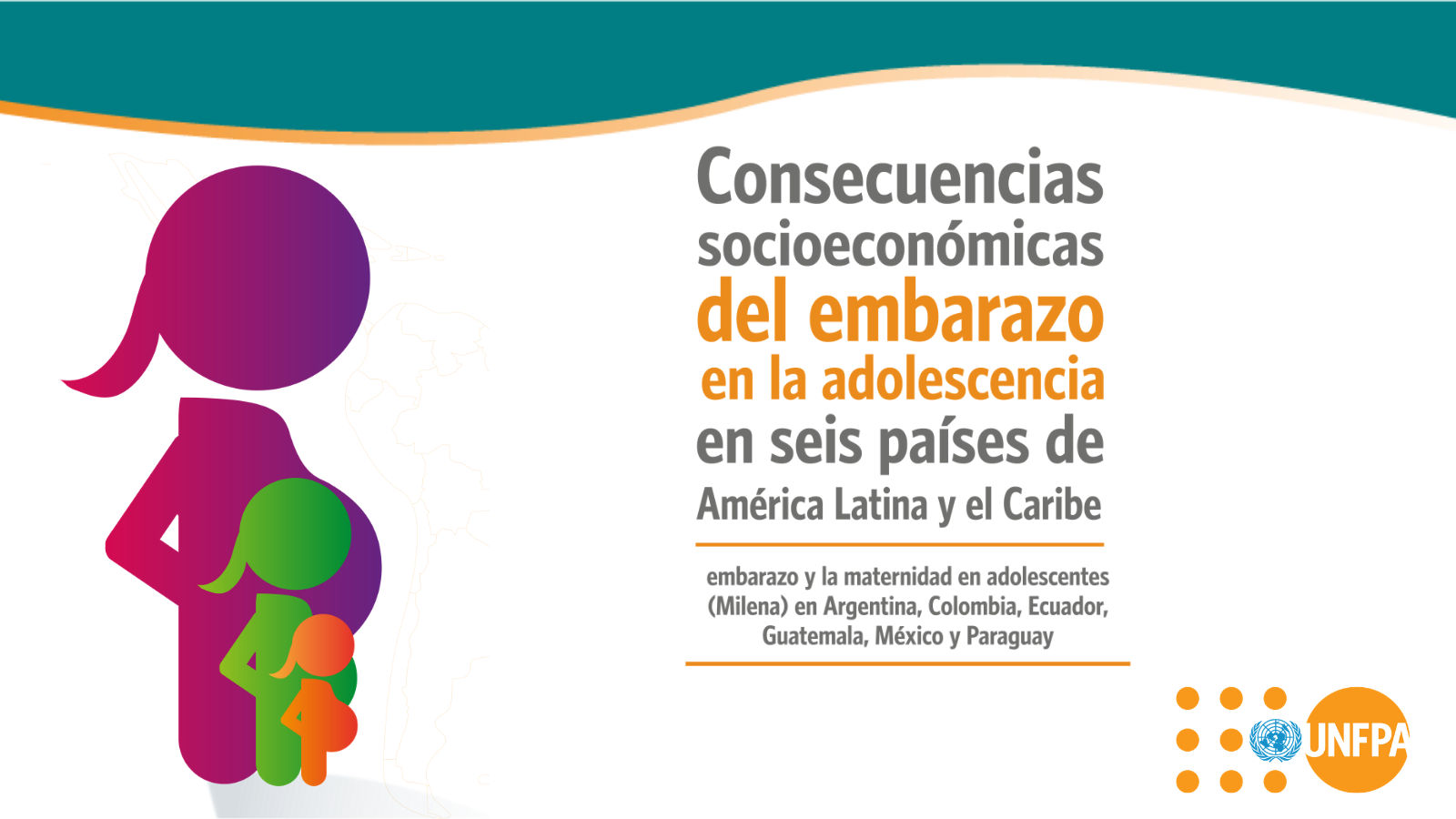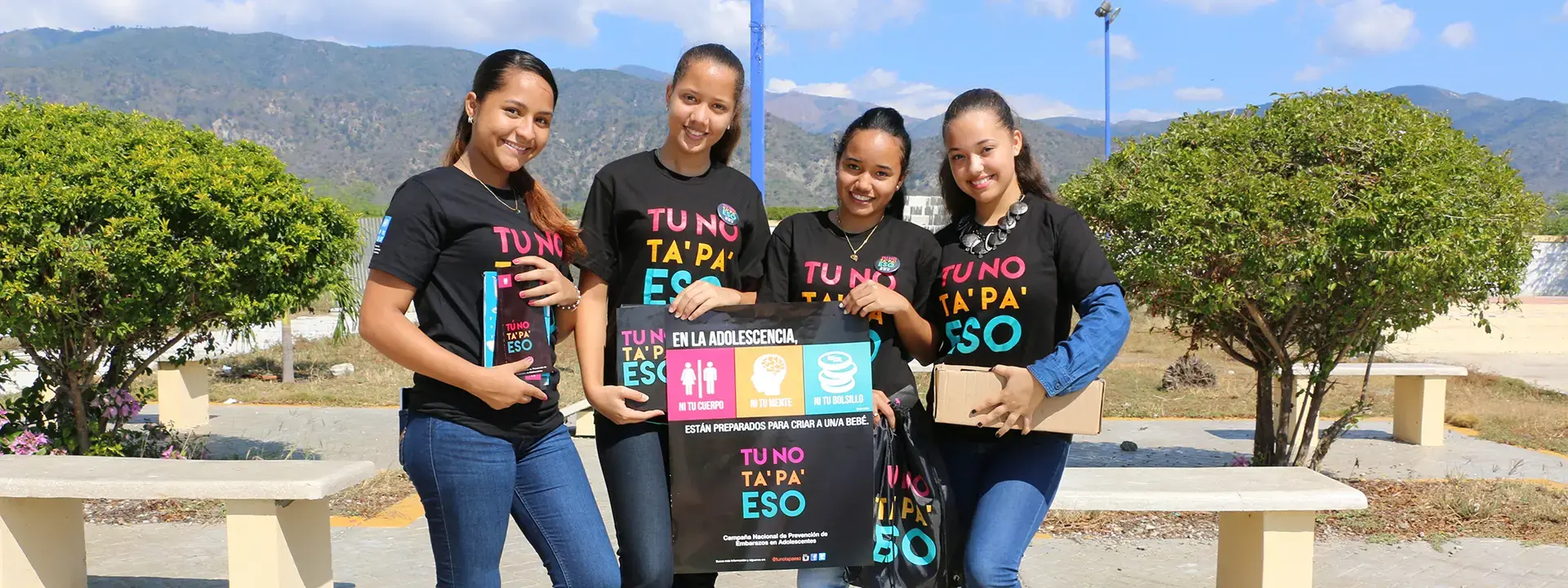Working to ensure young people enter adulthood as empowered citizens
When a teenager becomes pregnant or has a child, her health, education, earning potential, and entire future can be jeopardized, and she may become trapped in a life of poverty, exclusion, and powerlessness.
Adolescents are shaping the present and future of humanity. Depending on the opportunities and choices available to them during this period of life, they can enter adulthood as empowered and active citizens or, conversely, be undervalued, without a voice, and living in poverty.
Teenage pregnancy occurs in all corners of the world; however, poor, uneducated girls from ethnic minorities or marginalized groups, and from remote and rural areas, are three times more likely to become pregnant than their educated, urban peers.
In Latin America and the Caribbean, it is estimated that there is a population of 140 million young people. One of the factors that significantly affects the vulnerable situation of adolescent girls is unplanned pregnancy. The region has the second-highest rate of adolescent pregnancies in the world, and it is estimated that almost 18% of all births are to women under 20 years of age.
Maternal mortality in Latin America and the Caribbean is among the top three causes of death in adolescents between 15 and 19 years old. In adolescents under 15 years old, the risk of dying from pregnancy-related causes is up to three times higher than in women over 20 years old. In Latin America, it is believed that the annual number of unsafe abortions among adolescents aged 15 to 19 reaches 670,000.
Our Challenge
A change in approach is necessary. The United Nations Population Fund, UNFPA, recognizes adolescents and young people as subjects of rights, without distinction of any kind, allowing for a conception of comprehensiveness, non-discrimination, and social equality.
The human capital of adolescent girls must be valued, and they must be supported in making decisions about their lives, including their sexual and reproductive health. Likewise, they should be empowered by offering them real opportunities so that they can see that motherhood is not their only destiny.
The vast majority of adolescent pregnancies are not the result of a woman's decision and were not sought or desired at that time. Keeping girls in school is considered a protective factor against early pregnancies.
For Latin America and the Caribbean, adolescent pregnancy constitutes one of the most significant challenges in terms of sexual and reproductive health. Factors such as violence, barriers to accessing services, as well as information and counseling, coupled with the lack or deficiency of comprehensive sexuality education programs and the intergenerational transmission of poverty, directly contribute to this problem.
Effective measures and interventions for pregnancy prevention must be available to adolescents. This includes access to comprehensive sexuality education, accurate and quality information, access to modern and long-acting contraceptive methods along with effective social and community support interventions, social protection mechanisms, and their retention in quality secondary education, preventing school dropout.
The Opportunity
Advocacy for investment in youth and for the recognition of adolescents and young people as subjects of rights is the opportunity available to achieve a new balance in policies related to adolescents and young people in the region.
There are lines of intervention and regional policies that strengthen this advocacy work, such as:
- Universal access to youth-friendly and quality health services, particularly in sexual and reproductive health.
- The expansion and coverage and the improvement of the quality of secondary education; promoting an entrepreneurship mindset among young people.
- Poverty reduction.
- Citizen participation.
Our Strategy
UNFPA has focused its efforts on raising awareness and taking action related to the problem of adolescent pregnancy by developing programs that enable adolescents and young people to control their sexual and reproductive lives through comprehensive sexuality education and advocating for a comprehensive and rights-based approach that requires the urgent commitment of governments to ensure conditions that favor the enjoyment and free exercise of the rights of children and adolescents.
Young people and adolescents should have access to sexual and reproductive health services and related information, free from the economic and social pressures that often result in early pregnancies, as well as from the poverty, poor health, and unrealized human potential that accompany them.
UNFPA's strategy to prevent adolescent pregnancy is based on ensuring access to sexual and reproductive health services and information, including the use of modern contraceptives and limiting marriage before the age of 18. We also work jointly with governments in the region to include investment in youth within their budgets and policies, ensuring the full development of the potential of adolescents and young people.
The Socioeconomic Consequences of Adolescent Pregnancy
Adolescent pregnancy and early motherhood constitute one of the major social, political, and economic challenges for the countries of Latin America and the Caribbean. When an adolescent becomes a mother, her sexual and reproductive rights, and her rights to health and education, among others, are violated in the short term. However, the consequences also occur in the medium and long term.
Her potential for development, her possibility of obtaining decent income, and her future may be in jeopardy. She is likely to be trapped in a vicious cycle of poverty and exclusion, which will mainly affect her but will also limit the opportunities of her children and, in aggregate, given the magnitude of adolescent pregnancy in the region, will affect the reality of her communities and countries.
Latin America and the Caribbean has the second-highest rate of adolescent pregnancies in the world. Furthermore, it is estimated that almost 18% of births in the region are to mothers under 20 years of age. Each year, around one and a half million adolescents between the ages of 15 and 19 give birth. These figures, alarming in themselves, become more critical when observing that many of these pregnancies are a consequence of a lack of information, limited access to contraceptive methods, and sexual and gender-based violence.
Report: Socioeconomic Consequences of Adolescent Pregnancy in Six Countries of Latin America and the Caribbean Using the Milena Methodology

Given this concern and the constant acceleration of adolescent pregnancy and early motherhood, UNFPA for Latin America and the Caribbean has produced the report Socioeconomic Consequences of Adolescent Pregnancy in Six Countries of Latin America and the Caribbean. The report presents the findings in Argentina, Colombia, Ecuador, Guatemala, Mexico, and Paraguay. Likewise, Peru launched its country report in April 2021.
Read the country reports:
- Colombia
- Ecuador
- Mexico
- Peru
- Paraguay
More Highlights
- State of the World Population 2013 – Motherhood in Childhood


